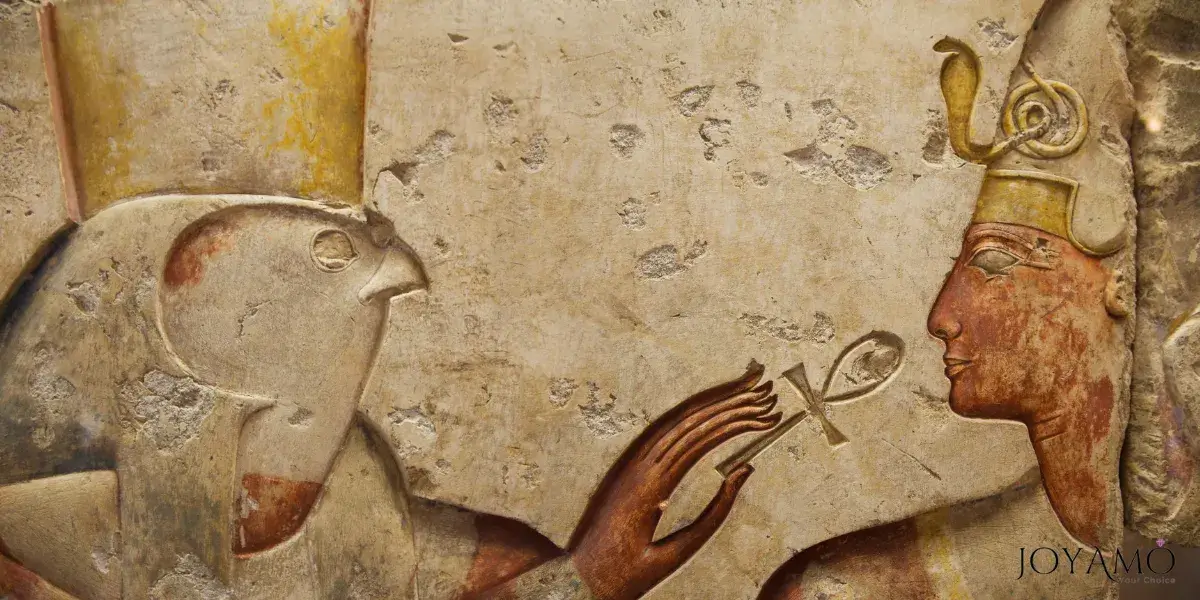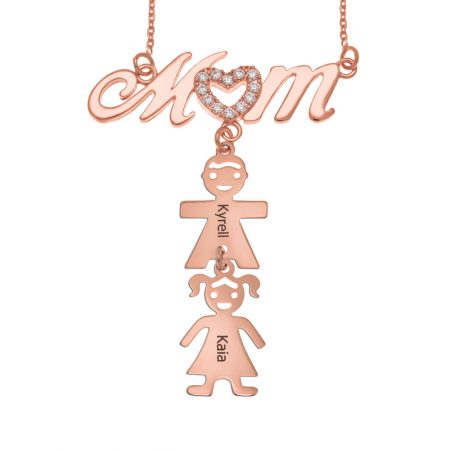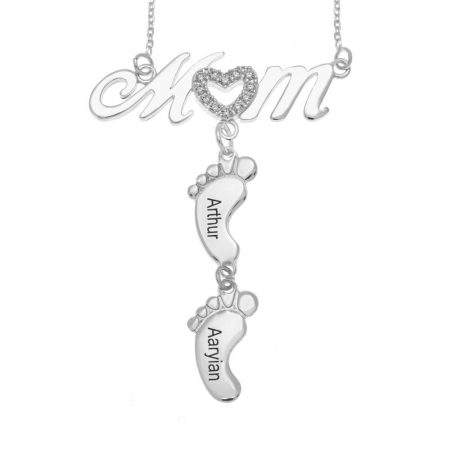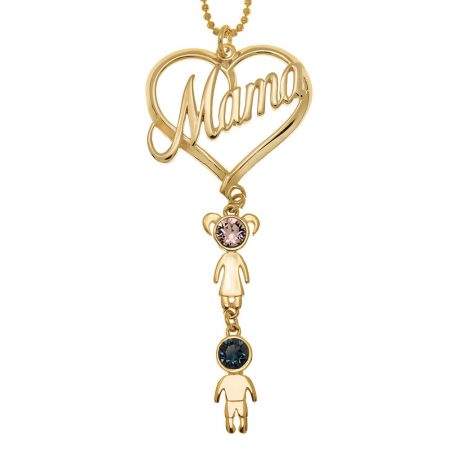The Ankh symbol, commonly known as the key of life of the Nile remains a timeless and iconic emblem of civilization.
Its design features a looped cross with a teardrop-shaped loop, at the top resembling either a key or a mirrored image of the hieroglyph for “life” or “breath of life.”

Introduction to the Ankh Symbol
In society, the Ankh carried deep significance symbolizing eternal life and immortality.
Its origins trace back to the Early Dynastic Period (around 3100–2686 BCE) where it first appeared in art and religious symbols.
Depicted often in the grasp of gods and goddesses it signified their ability to bestow life and safeguard those living.
The Ankh’s link to life and fertility is apparent in its imagery.
The looped top is sometimes seen as representing the femininity of the womb, while the elongated bottom part embodies masculinity, symbolizing renewal and creation.
This dual nature highlights how the Ankh symbolizes the continuation of life and the eternal cycle encompassing birth, death, and rebirth.
In addition to its associations with life and fertility, the Ankh also carried meanings related to power and authority.
The Ankh was often seen in the hands of pharaohs who were thought to be links between the gods and ordinary people.
By using the Ankh pharaohs showed their right to lead their power to ensure the welfare and success of their subjects.
The widespread presence of the Ankh in society is clear from its frequent depiction in various forms such as temple carvings, burial items, and personal decorations.
Its common appearance highlights its significance as a symbol with universal importance that touched every aspect of life and culture.
The lasting impact of the Ankh goes beyond the boundaries of Egypt still captivating and intriguing individuals worldwide today.
Its mysterious symbolism and timeless charm have sparked interpretations and adaptations making it a symbol that transcends cultures and speaks across generations.
The Ankh represents the circle of life, death, and rebirth in Egyptian beliefs.
Its unique look and rich symbolism have cemented its place as one of Egypt’s iconic symbols that continues to fascinate people through history leaving an unforgettable impression on human imagination.
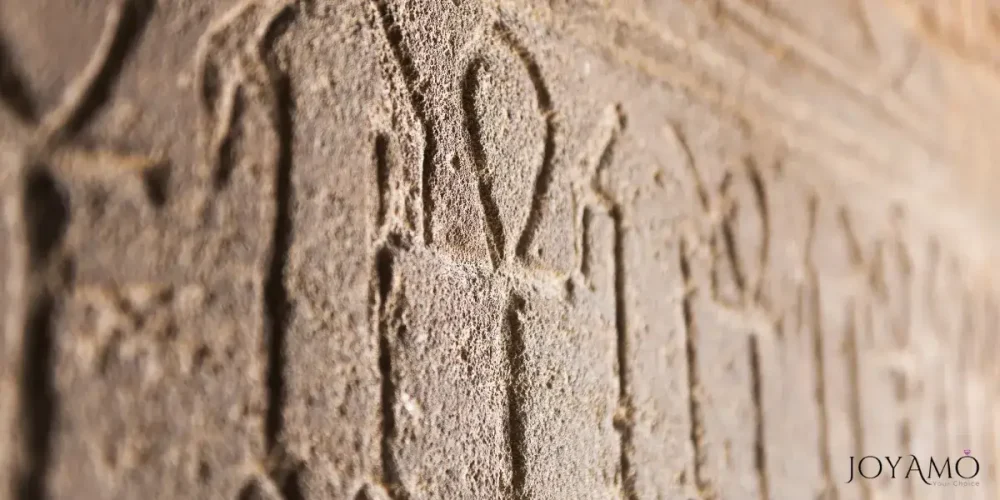
Origins and History of the Ankh
The Ankh symbol has its roots in civilization dating back to the Early Dynastic Period around 3100–2686 BCE.
Its initial appearances can be seen in the art and writings of that era, where it emerged as a symbol with religious and cultural meanings.
Although the exact beginnings of the Ankh are veiled in mystery scholars theorize that its design may have developed from symbols linked to life and fertility concepts.
Some propose that the looped cross of the Ankh signifies the sun setting on the horizon symbolizing the cycle of day and night along with life’s rejuvenation at each sunrise.
During the Old Kingdom and subsequent periods in history, the Ankh remained a feature in religious imagery and funerary art.
It was often shown in depictions involving deities like Osiris, Isis, and Hathor emphasizing its connection to authority and beliefs, about life after death.
As Egyptian society progressed over time so did the symbolism and importance associated with the Ankh.
During the Middle Kingdom (, around 2055–1650 BCE) and New Kingdom (around 1550–1070 BCE) eras the Ankh started to be seen in daily life.
It appeared not just in contexts but in everyday situations as a symbol of wealth, security, and good luck.
The lasting importance of the Ankh in society can be seen through its representation in various forms like temple carvings, tomb art, and personal charms.
People often used it as a charm believed to bring blessings and shield against harm reflecting its role, as a symbol of favor and safety.
With the decline of Egyptian civilization and foreign rule taking over the symbolism of the Ankh persisted, continuing to hold meaning in Egyptian culture and beyond.
As Christianity spread throughout Egypt the Ankh took on meaning by being linked with symbols as an early form of the Christian cross.
In times the Ankh still holds significance as a symbol representing life, eternity, and spiritual strength.
It captures people’s imagination worldwide with its enduring legacy that showcases the impact of Egyptian culture and the timeless appeal of its symbols.
Origins and history of the Ankh symbol
| Aspect | Description |
|---|---|
| Origins | Symbolized concepts of life, fertility, eternity, and divine protection, serve as a central motif in religious rituals, mythology, and funerary practices. |
| Appearance | Characterized by a looped cross with a teardrop-shaped loop at the top, resembling a key or a mirror image of the ancient Egyptian hieroglyph for “life” or “breath of life.” |
| Early Depictions | Earliest appearances found in ancient Egyptian artwork and inscriptions, where it began to manifest as a distinctive symbol with profound religious and cultural significance. |
| Evolution over Time | Continued to be prominently featured in religious iconography, funerary art, and everyday life throughout various periods of ancient Egyptian history. |
| Enduring Significance | Earliest appearances are found in ancient Egyptian artwork and inscriptions, where it began to manifest as a distinctive symbol with profound religious and cultural significance. |
| Cultural Context | Held profound significance within the broader cultural context of ancient Egyptian religion, mythology, and ritual practices, reflecting the cosmological beliefs of the civilization. |
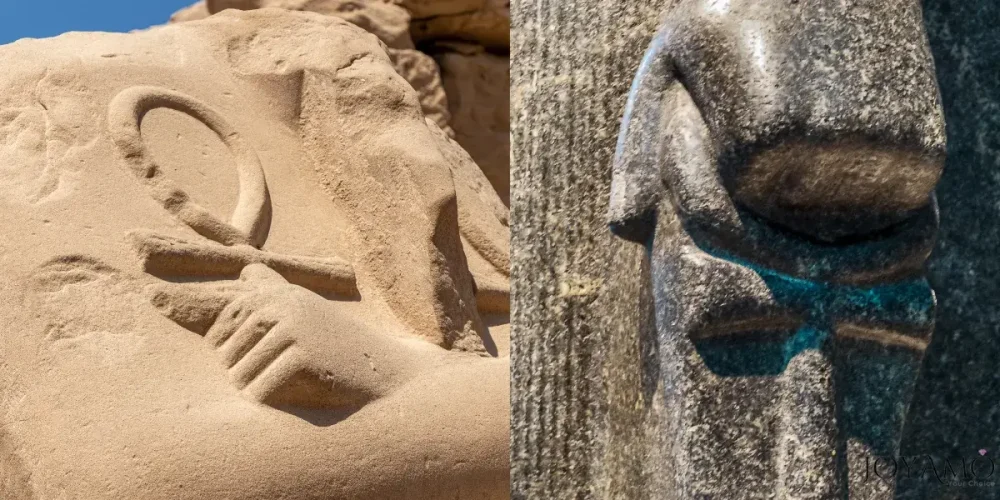
The symbolism of the Ankh
The Ankh holds a variety of meanings deeply rooted in the beliefs of the Egyptians each contributing to its richness and complexity.
One key aspect is its representation of life making it a powerful symbol of vitality and existence within society.
Essentially the looped cross of the Ankh signifies the unity of female energies reflecting the continuation and perpetuation of life.
The looped top is often seen as representing femininity embodying creations nurturing essence and the womb while the elongated bottom embodies masculinity symbolizing strength, fertility, and renewal.
Together they symbolize the cycle of birth, death, and rebirth—the essence of life itself.
Moreover, the Ankh is strongly linked to ideas of fertility and reproduction. Its shape resembles a key that unlocks creation’s mysteries making it a potent symbol for those seeking blessings in fertility and abundance.
It was commonly utilized in rituals related to fertility rituals for childbirth or agricultural prosperity as a symbol heralding life and growth.
Besides representing life and fertility aspects the Ankh also signifies eternity and an everlasting soul.
The Ankh’s round shape and ending loop suggest a cycle that transcends time and space symbolizing immortality and the afterlife, in contexts. It was believed that owning an Ankh granted life and protection among the gods.
The Ankh represents protection and favor often depicted in the hands of gods and goddesses to bestow blessings and shield mortals from harm.
Pharaohs also wielded the Ankh as a symbol of their authority as manifestations of power responsible for their subjects’ welfare.
In culture, the Ankh embodies themes of life, fertility, eternity, and divine safeguarding.
Its enduring importance lies in its ability to encapsulate these concepts in a yet impactful symbol that has resonated through centuries as a timeless emblem of vitality, spirituality, and cosmic harmony.
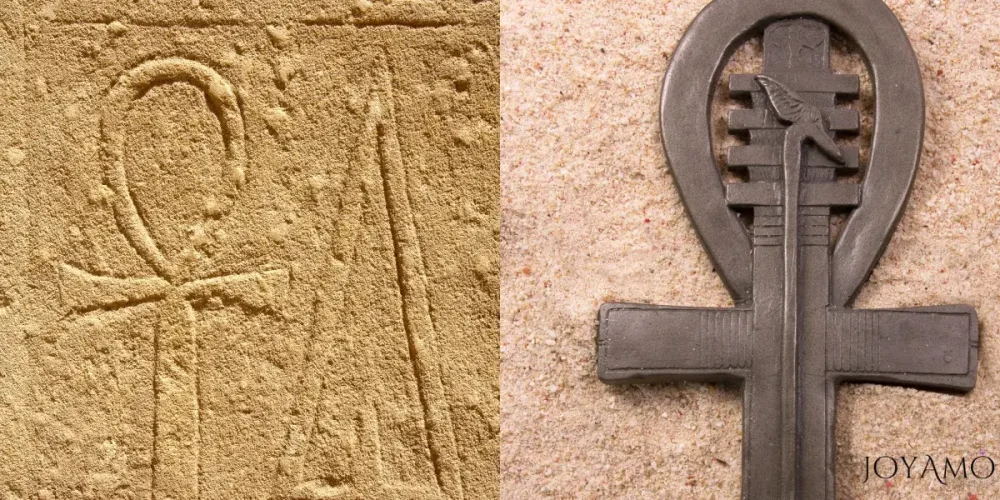
Ankh Meaning in Christianity
Scholars and enthusiasts have long been fascinated by the connections between the symbol and Christian symbolism, sparking debates and discussions about shared meanings between these two iconic symbols.
One prevalent theory suggests a relationship between the Ankh and the Christian cross noting similarities in their shapes and interpretations.
It is proposed that the Ankh may have influenced or inspired the Christian cross as both symbols convey themes of life, resurrection, and spiritual salvation.
The Ankh is closely linked to beliefs about eternal life and the afterlife while the Christian cross represents Jesus Christ’s crucifixion and resurrection symbolizing redemption and eternal life for believers.
Some scholars speculate that early Christians in Egypt might have encountered the Ankh symbol through exchanges with Egyptians.
They argue that elements of symbolism could have impacted iconography development leading to the adoption of the cross as a significant symbol of faith.
Supporters of this theory also point out the parallel in how both symbols are perceived with significance.
The cross like the Ankh represents protection, salvation, and the victory of life, over death.
It symbolizes Christ’s sacrifice and the assurance of life for those who follow his teachings.
It is important to be cautious when exploring these ideas as there is no evidence linking the Ankh directly to the Christian cross.
While there are similarities and common themes between the two symbols, their cultural backgrounds and religious meanings are distinct.
Nevertheless investigating connections between the Ankh and Christian symbolism provides insights into how ideas are shared across different cultures and how ancient symbols continue to be relevant in modern religious discussions.
Whether there is an association between the Ankh and the Christian cross, people’s enduring fascination with these symbols highlights their importance as expressions of faith, spirituality, and humanity’s search for meaning and transcendence.
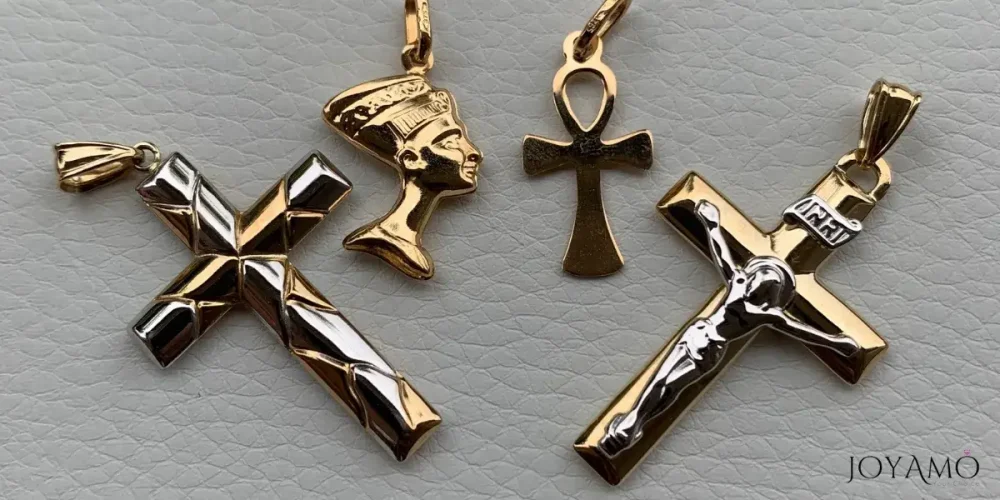
Comparing the Ankh and the Christian Cross
The Ankh and the Christian cross are both symbols that carry meaning in their respective religious beliefs.
While they both symbolize concepts of life, eternity, and divine protection they also have interpretations and cultural backgrounds.
Originating from culture the Ankh signifies life, fertility, and eternal existence.
Its looped cross shape represents the balance between female principles reflecting the nature of life according to Egyptian beliefs.
The Ankh was closely tied to gods and pharaohs playing a role in ceremonies and burial customs as a conduit for blessings and divine safeguarding.
On the other hand, the Christian cross symbolizes Jesus Christ’s crucifixion and resurrection embodying themes of redemption, salvation, and everlasting life for believers.
It stands as a point of faith representing Christ’s sacrificial love and the victory of good over evil.
Within Christianity, the cross holds importance as a symbol of God’s grace and as a foundational aspect of Christian teachings.
Although both symbols touch upon themes such as life and eternity, their origins in settings result in distinctive meanings enriched by their historical contexts.
Similarities and differences between the Ankh symbol and the Christian cross
| Aspect | Ankh Symbol | Christian Cross |
|---|---|---|
| Shape | Looped cross with a teardrop-shaped loop at the top | Traditional cross shape with vertical and horizontal bars |
| Meaning | Represents life, fertility, and eternal existence | Symbolizes the crucifixion and resurrection of Jesus Christ, redemption, and eternal life for believers |
| Cultural Origin | Originated in ancient Egyptian culture | Originated in Christian religious tradition |
| Historical Significance | Associated with ancient Egyptian deities and pharaohs | Central symbol of Christianity, representing the cornerstone of Christian faith and doctrine |
| Religious Context | Used in ancient Egyptian religious rituals and funerary practices | Central to Christian worship, representing Christ’s sacrifice and the promise of salvation |
| Iconic Usage | Wielded by gods and pharaohs in ancient Egypt | A traditional cross shape with vertical and horizontal bars |
| Interpretation | Often seen as a symbol of divine protection and the cycle of life | Represents sacrificial love, redemption, and the triumph of good over evil |
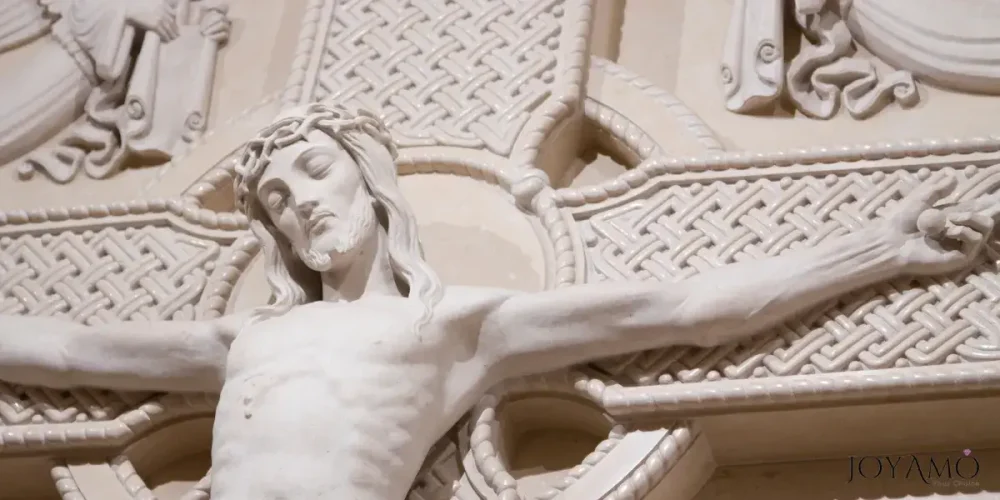
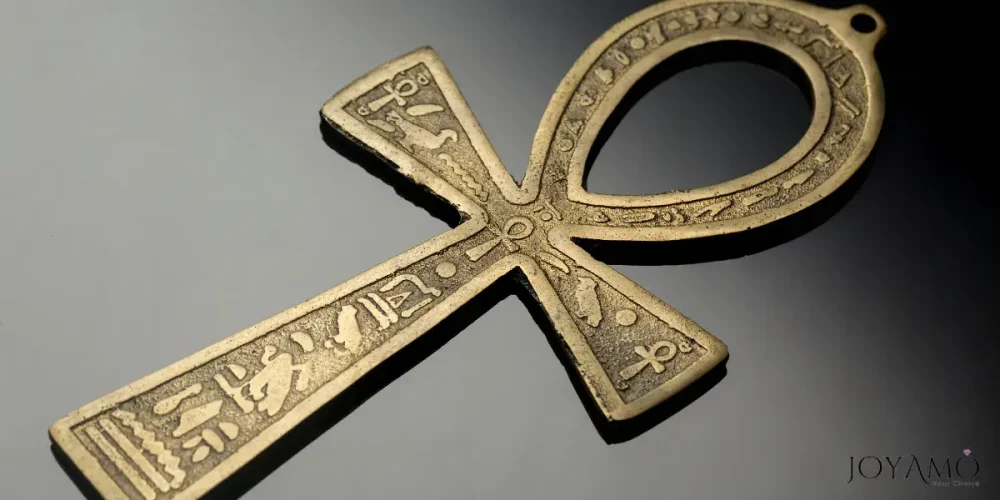
Cultural Context of the Ankh
The Ankh symbol holds significance in ancient Egyptian beliefs playing a central role in their religious practices, mythology, and rituals.
In the faith, the Ankh symbol was closely linked to ma’at representing principles of truth, justice, harmony, and order in the cosmos.
It was seen as a symbol of life and eternal existence that maintained balance and ensured the continuation of life.
Its presence in symbols and ceremonies emphasized its importance as a symbol of protection and cosmic equilibrium.
Furthermore, the Ankh held meaning in myths where it was often associated with gods and goddesses.
Deities like Osiris, Isis, and Hathor were commonly shown holding the Ankh as a sign of their ability to bestow blessings of fertility, prosperity, and protection on their followers.
In myths about the soul’s journey after death, the Ankh represented immortality and new beginnings.
In rituals, like practices and mortuary rites, the Ankh played a role.
The Ankh symbol was frequently portrayed in tomb paintings, burial chambers, and funerary artifacts as an emblem believed to ensure the well-being and rebirth of the deceased.
Its inclusion, in art and ceremonies mirrored the rooted beliefs of ancient Egyptians in life continuity beyond death and the soul’s journey to the afterlife.
The cultural significance of the Ankh symbol in religion, mythology, and rituals highlights its importance as a representation of life, fertility, eternity, and divine safeguarding.
Its widespread presence in imagery, myths, and burial traditions illustrates its role, in shaping the spiritual convictions and cosmological perspective of Egypt’s ancient civilization.
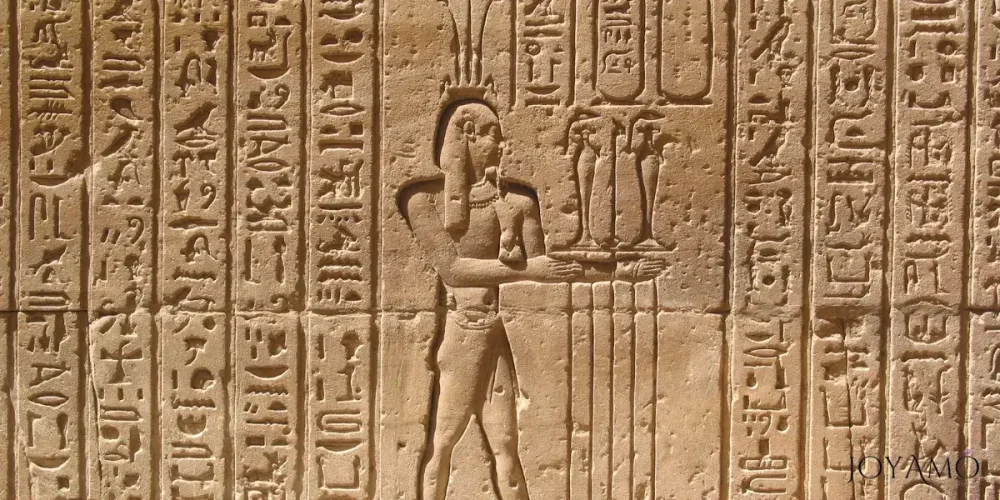
Ankh in Egyptian Art and Architecture
The symbol of the Ankh is widely represented in art and architecture appearing in various forms and settings that reflect its significant importance in Egyptian culture and religious beliefs.
One of the ways the Ankh is depicted is through writing, where it symbolizes the sound “ankh” and represents concepts related to life, vitality, and divinity.
It frequently appears in inscriptions on temple walls, tombs, and grand structures as an element of written communication and religious symbolism in Egypt.
Aside from hieroglyphs, the Ankh can be seen in temple reliefs showing gods and goddesses holding or offering it to pharaohs as a symbol of favor and protection.
These reliefs often depict ceremonies, offerings, and mythological stories that underscore the Ankh’s significance as an emblem of life, eternity, and cosmic balance within the sacred realm of temples.
Furthermore, the Ankh is commonly present in art and burial-related objects from Egyptian customs.
The Ankh symbol can be seen on sarcophagi, coffins, and burial shrouds acting as an emblem believed to ensure the well-being and resurrection of the departed.
Its presence, in art reflects the Egyptian belief in life continuing after death and the soul’s journey to the afterlife emphasizing its role as a symbol of hope and spiritual safeguard in the realm of the deceased.
Apart from its importance, the representation of the Ankh in art and architecture also mirrors the artistic styles and conventions of that era.
The graceful and stylized design, featuring a looped cross with a teardrop-shaped loop at its peak showcases the skill of craftsmen in producing visually captivating and culturally meaningful artworks.
The portrayal of the Ankh symbol in art underscores its widespread significance and deep-rooted importance within Egypt’s cultural and religious milieu.
Depicted in hieroglyphs temple reliefs or funerary items, the Ankh stands as a testament to civilization’s enduring legacy and its beliefs in life’s power, eternity, and divine protection.
The Ankh in Egyptian art and architecture
| Aspect | Description |
|---|---|
| Hieroglyphic Writing | Represents the sound “ankh” and serves as a determinative symbol associated with concepts of life, vitality, and divinity in written communication. |
| Temple Reliefs | Depicted being wielded by gods and goddesses or offered to pharaohs as a symbol of divine favor and protection, emphasizing its role in religious rituals. |
| Funerary Art and Objects | Found on sarcophagi, coffins, and burial shrouds, serving as a talismanic emblem believed to ensure the eternal well-being and resurrection of the deceased. |
| Aesthetic Significance | Demonstrates the mastery of ancient Egyptian artisans in creating visually striking and culturally significant works of art with its elegant and stylized form. |
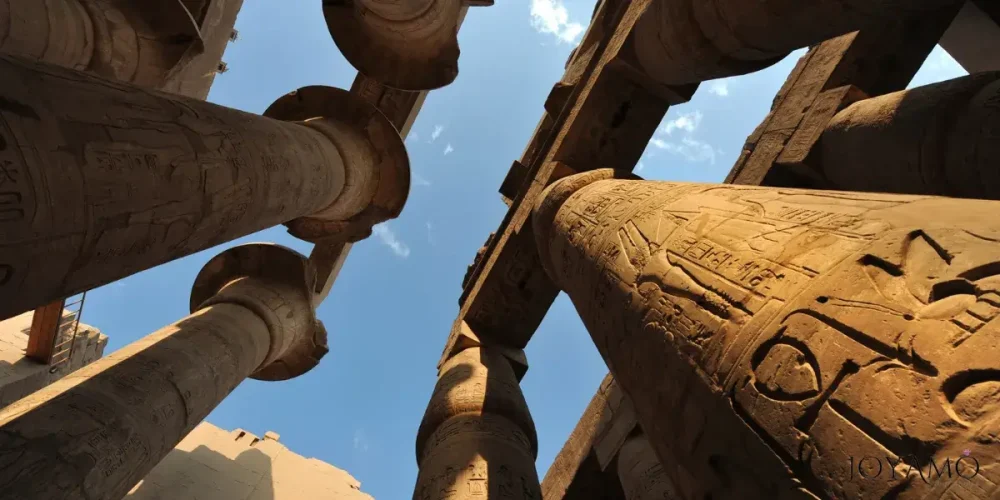
💡 The Ankh Meaning FAQs
📌 What does the ankh symbolize?
The Ankh symbolizes life, fertility, eternity, and divine protection in ancient Egyptian culture. It represents the cycle of life, death, and rebirth, embodying the interconnectedness of existence and the promise of eternal life.
📌 Is it OK to wear an ankh?
Yes, it is generally acceptable to wear an Ankh as a piece of jewelry or accessory. In modern times, the Ankh has become a popular symbol adopted by various individuals and communities, often worn as a representation of personal beliefs, spirituality, or simply as a fashion statement.
📌 What is the power of the ankh?
The power of the Ankh lies in its symbolism and cultural significance. It is believed to bestow blessings of life, vitality, and protection upon those who possess or wear it. As a potent emblem of divine authority and cosmic harmony, the Ankh serves as a conduit for spiritual energy and divine favor.
📌 What does the ankh protect against?
The Ankh is believed to protect against harm, evil spirits, and negative influences. In ancient Egyptian culture, it was often used as a talisman or charm believed to safeguard individuals from physical and spiritual threats. As a symbol of life and divine protection, the Ankh is thought to offer spiritual fortitude and resilience in the face of adversity.
 SHIPPING
SHIPPING
